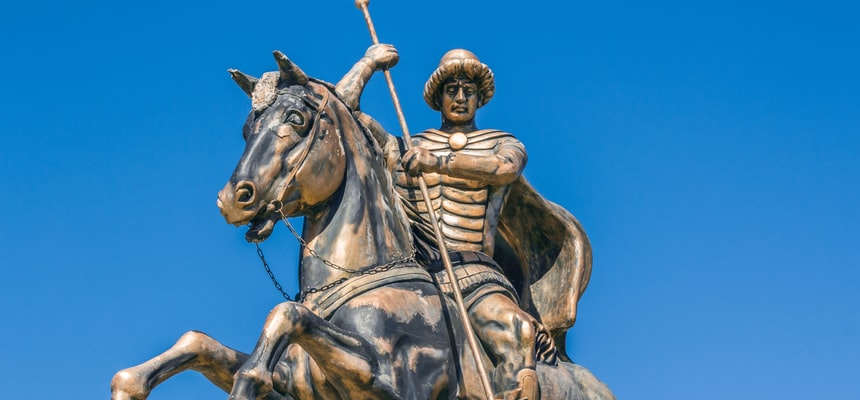
Several months ago, this series addressed the Tusculum and Crescenti families. These two familes controlled the Papacy for about 150 years. The last of the family popes was Pope Benedict IX. We thought that, when the Germans began to interfere with the papacy, the two Italian families shifted their sights.
Not so. Alberic III of Tusculum had paid for the election of his son, Theophylact. The boy became Pope Benedict IX before he became a man. Emperor Henry of the Holy Roman Empire deposed him. It was only a matter of time before his brothers had another chance at control of the papacy.
Benedict’s nephew, Giovanni Minico, was Bishop of Velletri and was created cardinal in 1050. He was good, wise, humble, and chaste, an excellent choice in a pope. The reformist arm of the Church highly esteemed this cardinal. Additionally, he was one of five men proposed by Cardinal Frederick of Lorraine as a potential successor to Victor II. As it turned out, Frederick was elected, instead, when Victor died. He became Stephen IX.
After some difficulties with Roman nobles, Stephen chose to go talk to his brother, Duke Godfrey in early 1058. Before he left, he issued a decree that no papal election was to be held until his friend, Cardinal Hildebrand, returned from Germany. It may be that Stephen thought the clergy of Rome was planning to fill his throne while he was away. This was clearly against canon law. Stephen never got to his brother. He died 29 March of 1058 in Florence. Stephen’s friends, Cardinal Humbert and Cardinal Peter of Tusculum, brought the news of Stephen’s death to Rome.
REACTION OF THE ANTI-REFORMISTS
One part of the Roman aristocracy, the anti-reformists, engineered a coup. The leaders were Gregory of Tusculum, Cardinal Giovanni’s uncle and brother to Benedict IX. With them were also members of the Crescentius family, distant cousins of Benedict IX. With a large force, the fighters forced their way into Rome, and seized control of the Vatican. This was less than a week after Pope Stephen’s death. The anti-reformists’ choice, Cardinal Giovanni, was unwilling to be enthroned. His family forced him to take the papacy. The bishop of Ostia, Peter Damian, refused to consecrate Giovanni. Other reformers objected loudly. They had to flee. Humbert and Peter of Tusculum went to Benevento. Any cardinals who alleged it was an irregular election also left.
Meanwhile, Cardinal Hildebrand was on his way back from Germany when he heard the news. He went to Florence where he consulted with Duke Godfrey. They decided that Gerhard of Burgundy would be a wise choice for Pope. Empress Agnes supported this. The cardinals who did not support Benedict X met at Siena in December of that year and elected Gerhard. He took the name Nicholas II.
The whole assembly proceeded towards Rome, holding a synod at Sutri. Here, Nicolas proclaimed Benedict X deposed and excommunicated. The non-pope fled to the castle of Count Gerard of Galeria, a family member. That was not sufficient for Pope Nicholas. Assisted by the Norman forces still in southern Italy, he waged war against Benedict and his supporters. It took a year for Benedict to come into Vatican custody.
Benedict X, once again Giovanni Minico, was publicly tried April 1060. His defense that he was enthroned unwillingly was not accepted. The judges convicted him and stripped him of all titles and ordinations. His sentence was confinement in a guest house of the Basilica of St. Agnes. Due to sympathetic feelings, he, later, received back the post of Lector. However, he was confined until his death, somewhere between 1073 and 1080. Cardinal Hildebrand, who was Pope Gregory VII at that time, saw him as a true pope and had him buried with honors.
As a result of this debacle, Pope Nicolas II established new election laws in 1059. This allowed only cardinals to vote in a new pope. This law is still in place.
The Liber Pontificalis considered Benedict X a true pope, During the reign of Pope Honorius III in the thirteenth century, he became classified as an antipope.

Recent Comments